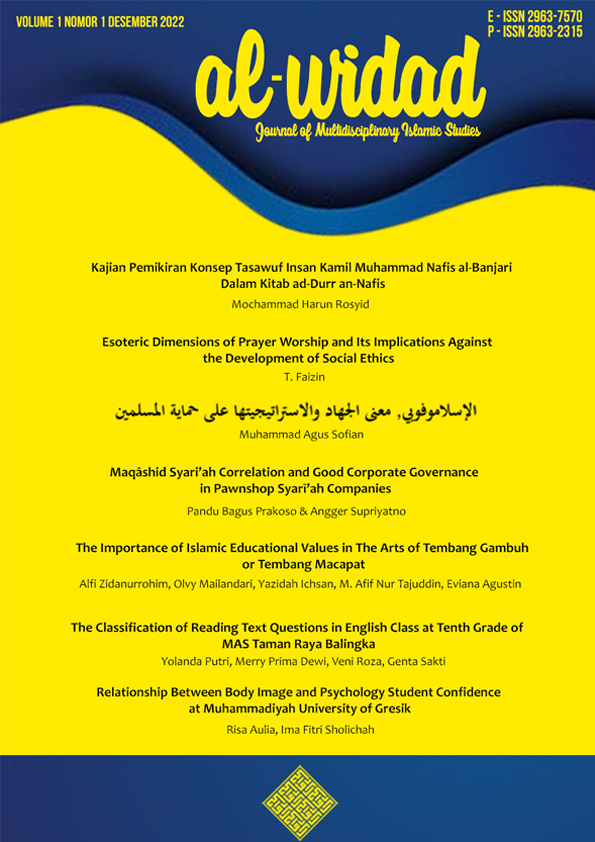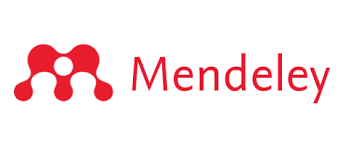Arabic Language Learning Methods at the Raudhatun Najah Islamic Boarding School, Langsa City
DOI:
https://doi.org/10.58405/aw.v2i1.65Keywords:
learning, arabic, islamic boarding schoolAbstract
Every technique that experts have revealed has its advantages and disadvantages. This is a positive thing because they complement each other. Educators must have accuracy in determining the right method for students so that mistakes do not occur. Choosing the appropriate method for students is a very important first step to achieving success in teaching-learning. Conversely, errors in selecting methods by educators can be the initial cause of failure in achieving goals. The methodology in this study was to use qualitative field research conducted at the Raudhatun Najah Islamic Boarding School. In contrast, the research findings showed that at the Raudhatun Najah Islamic boarding school, students were asked to directly speak Arabic conversations without translating into their mother tongue. Although in practice, there are still many obstacles encountered. Some problems encountered at the Raudhatun Najah Islamic boarding school are the many words that need to be clarified for students, the lack of awareness of students to speak Arabic, and the lack of motivation from some teachers to create a good Arabic language environment. Arabic learning methods at the SMP/MTs level should focus on conversational aspects and everyday vocabulary mastery. This should continue to be practiced until students feel confident without having to focus too much on grammar from the start. After students feel comfortable speaking Arabic, then they are taught about grammar. It is important to remember that grammar in teaching Arabic is not an end but a tool to improve speaking and writing skills. This aspect of writing can be taught by asking students to write their everyday stories.
Downloads
References
Abitolkha, A. M., Ismail, A. N., & Hady, Y. (2020). The Interrelation of Curriculum Development with Contextualization of Islamic Education Learning in Junior High School. TARBIYA: Journal of Education in Muslim Society, 7(1). https://doi.org/10.15408/tjems.v7i1.13843
Abubakar, R. (2021). Pengantar Metodologi Penelitian. In Antasari Press.
Ade Yulianti. (2018). Strategi Integrasi Kurikulum Pesantren dan Kurikulum Madrasah terhadap Perkembangan Karakter Peserta Didik. Jurnal Fakultas Ilmu Keislaman, 1(1).
Ardianto, E. (2016). Metodologi Penelitian untuk Public Relations Kuantitatif dan Kualitatif. In Simbiosa Rekatama Media.
Arif, M. (2019). METODE LANGSUNG (DIRECT METHOD) DALAM PEMBELAJARAN BAHASA ARAB. Al-Lisan, 4(1). https://doi.org/10.30603/al.v4i1.605
Aslamiah, A., Abbas, E. W., & Mutiani, M. (2021). 21st-Century Skills and Social Studies Education. The Innovation of Social Studies Journal, 2(2). https://doi.org/10.20527/iis.v2i2.3066
Aziz, A., & Anam, A. K. (2021). Moderasi Beragama Berlandaskan Nilai-Nilai Islam (Cet. I). Direktorat Jenderal Pendidikan Islam Kementerian Agama RI.
Doni Septi. (2016). Urgensi Bahasa Arab Dalam Perkembangan Ilmu Pengetahuan. Jurnal Ilmu Islam, 1(1), p.128-133.
Frishkopf, M. (2011). Ritual as strategic action: The social logic of musical silence in Canadian Islam. In Muslim Rap, Halal Soaps, and Revolutionary Theater: Artistic Developments in The Muslim World.
Furoidah, A. (2020). Peran Bahasa Arab Dalam Pengembangan Ilmu Dan Peradaban Islam Di Masa Daulah Abbasiyah (Studi Literatur). Al-Fusha : Arabic Language Education Journal, 2(1). https://doi.org/10.36835/alfusha.v2i1.352
Jailani, M., Wantini, W., Suyadi, S., & Bustam, B. M. R. (2021). Meneguhkan Pendekatan Neurolinguistik dalam Pembelajaran: Studi Kasus pada Pembelajaran Bahasa Arab Madrasah Aliyah. Jurnal Pendidikan Agama Islam Al-Thariqah, 6(1). https://doi.org/10.25299/al-thariqah.2021.vol6(1).6115
Jasni, S. R., Zailani, S., & Zainal, H. (2019). Pendekatan Gamifikasi dalam Pembelajaran Bahasa Arab. Journal of Fatwa Management and Research. https://doi.org/10.33102/jfatwa.vol13no1.165
Lestari, G., Mahbubah, A., & Masykuri, M. F. (2019). Pembelajaran Bahasa Arab Digital dengan Menggunakan Media Padlet di Madrasah Aliyah Billingual Batu. Proceeding International Conference on Islamic Education (ICIED), 4(1).
Mahmudah, S. (2018). MEDIA PEMBELAJARAN BAHASA ARAB. An Nabighoh Jurnal Pendidikan Dan Pembelajaran Bahasa Arab, 20(01). https://doi.org/10.32332/an-nabighoh.v20i01.1131
Najah, T. D. R. (2019). Buku Profil Dayah Raudhatun Najah. Dayah Raudhatun Najah Press.
Nasution, N. S., & Lubis, L. (2023). Urgensi Pembelajaran Bahasa Arab dalam Pendidikan Islam. Jurnal Simki Pedagogia, 6(1). https://doi.org/10.29407/jsp.v6i1.227
Ramadhan, S., Sunan, U., & Yogyakarta, K. (2017). Strategi Pembelajaran Bahasa Arab Pada Anak Usia Dini. Utile: Jurnal Kependidikan, III(2).
Ridho, U. (2018). EVALUASI DALAM PEMBELAJARAN BAHASA ARAB. An Nabighoh Jurnal Pendidikan Dan Pembelajaran Bahasa Arab, 20(01). https://doi.org/10.32332/an-nabighoh.v20i01.1124
Sakdiah, N., & Sihombing, F. (2023). Problematika Pembelajaran Bahasa Arab. Jurnal Sathar, 1(1). https://doi.org/10.59548/js.v1i1.41
Setyawan, C. E. (2020). ARAH PERENCANAAN PEMBELAJARAN BAHASA ARAB ABAD 21. Al-Manar, 9(1). https://doi.org/10.36668/jal.v9i1.133
Takdir, Jurnal, N., Pendidikan, K., Arab, B., Institut, T., Islam, A., & Sinjai, M. (2019). METODOLOGI PEMBELAJARAN BAHASA ARAB (ANALISIS PENDEKATAN QUANTUM ). Naskhi: Jurnal Kajian Pendidikan Dan Bahasa Arab, 1(1).
Takdir, T. (2019). METODOLOGI PEMBELAJARAN BAHASA ARAB. Jurnal Naskhi: Jurnal Kajian Pendidikan Dan Bahasa Arab, 1(1). https://doi.org/10.47435/naskhi.v1i1.65
Thohir, M. (2021). Metode Pembelajaran Bahasa Arab Sebagai Bahasa Asing. Kanzun Books.
Uliyah, A., & Isnawati, Z. (2019). Metode Permainan Edukatif Dalam Pembelajaran Bahasa Arab. Shaut Al Arabiyyah, 7(1). https://doi.org/10.24252/saa.v1i1.9375
Umam, N., & Budiyati, U. (2020). Pembelajaran Bahasa Arab Anak Usia Dini Berbasis NIlai-Nilai Karakter. Institut Agama Islam Imam Ghozali, 4(1).
Downloads
Published
How to Cite
Issue
Section
License
Copyright (c) 2023 Al-Widad

This work is licensed under a Creative Commons Attribution-ShareAlike 4.0 International License.













